The Rose That Made Portland Famous
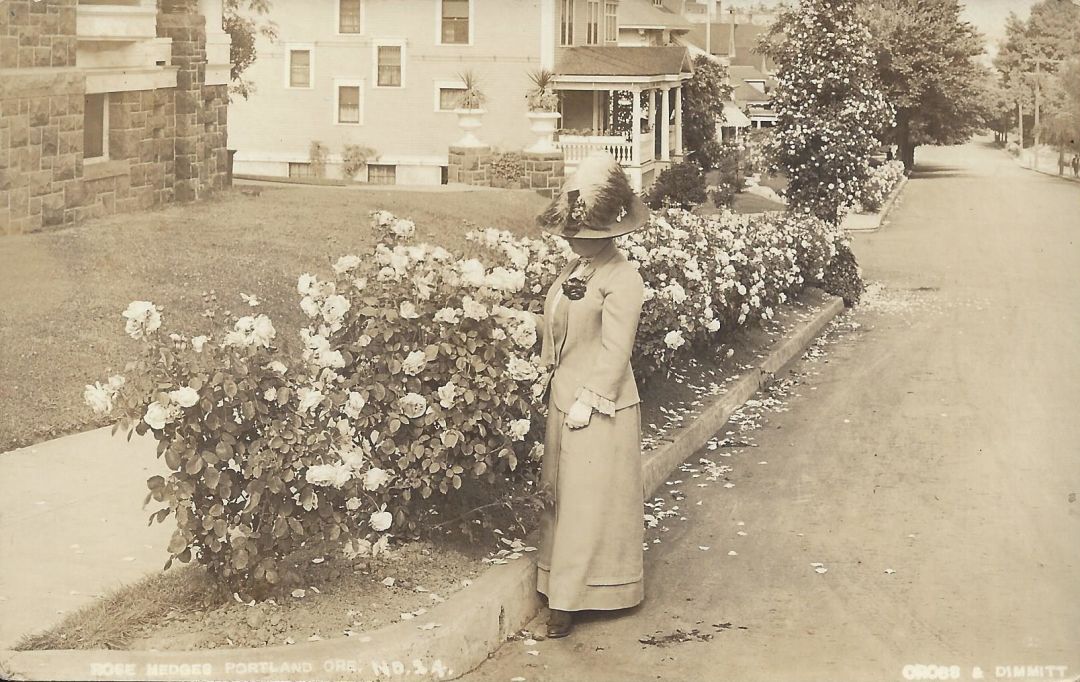
Woman admiring Madame Caroline Testout
With the annual Rose Festival in full swing, natives and newcomers alike may be asking themselves how Portland got its famous moniker. Now, you can learn how Portland went from Stumptown to the Rose City in the Oregon Historical Society exhibit Madame Caroline Testout: The Rose that Made Portland Famous. The exhibit is on view through June 17, and admission is free on Saturday, June 9 in honor of the Grand Floral Parade.

Portland’s love of roses unofficially began at a backyard rose show hosted by Georgiana Pittock in 1888. In 1889, attorney Frederick V. Holman formed the Portland Rose Society and organized the country’s first official rose show at Bishop Scott Academy (now Trinity Episcopal Cathedral) in Northwest Portland. The Portland Rose Society was instrumental in making Portland the Rose City, with its club constitution expounding the goal “to beautify the city by endeavoring to have roses planted before all residences of the city… and to make Portland noted as a rose city in preparation for the Lewis & Clark Centennial.”
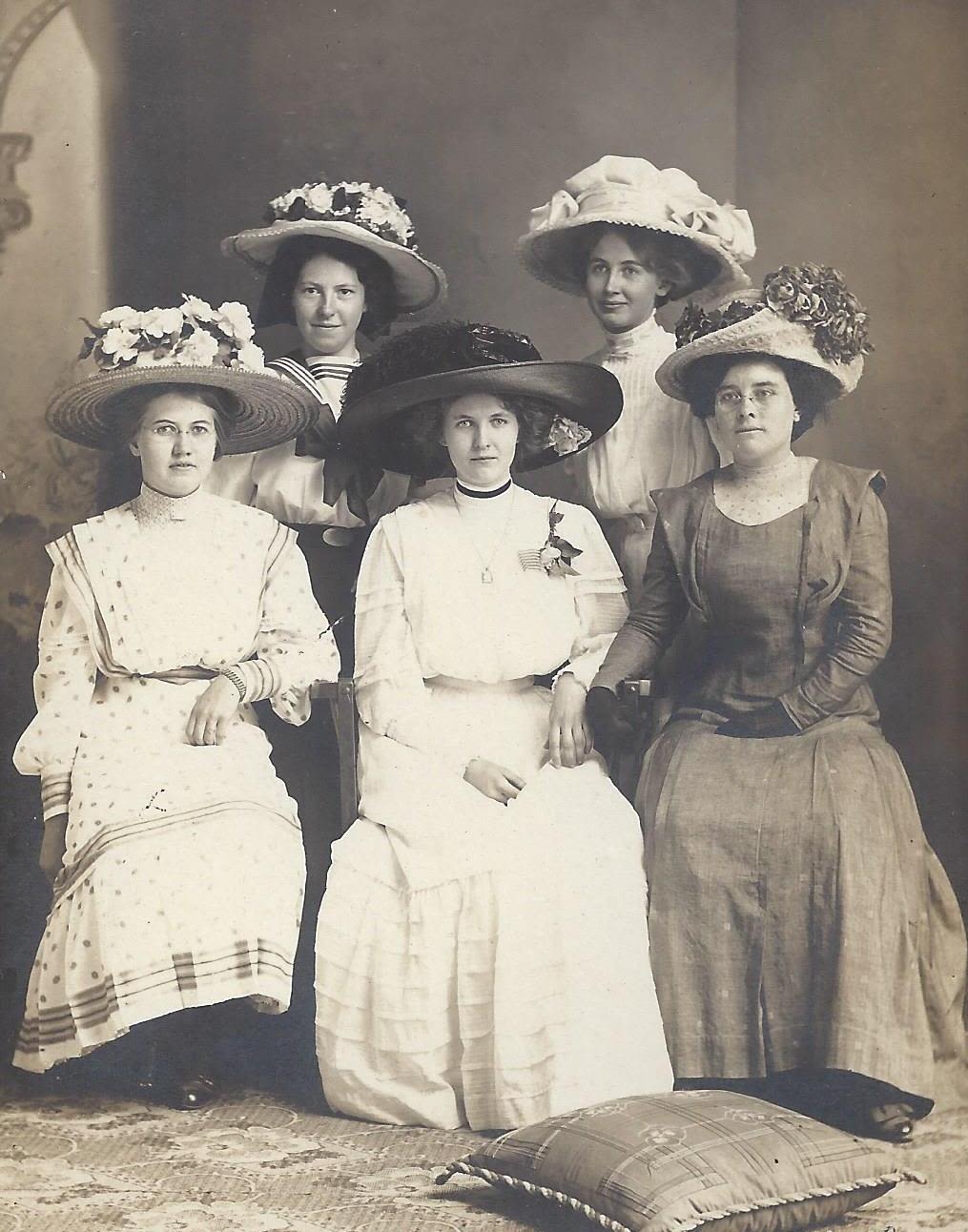
Willamette Valley women with rose and flower embellished hats
The committee charged with planning the world fair-esque 1905 Lewis & Clark Centennial Exposition contacted Holman for ideas on how to spruce up the city in preparation for this massive event. His suggestion: to plant the Madame Caroline Testout, a hybrid pink tea rose named after a French dressmaker first introduced to America in 1892. According to the December 8, 1901 issue of the Sunday Oregonian, Holman remarked, “If there is space for but one variety of roses, I urge the planting of Madame Caroline Testout: it lacks the perfume of the La France, but maintains its exquisite pink color, even in the hottest days of August… Portland has not yet a distinct name like San Francisco… but we can if we will give to Portland the name of the ‘Rose City’ during and after the Exposition of 1905.”
The rose-lined streets of Portland astonished visitors when they arrived in 1905. Rose mania was well underway as nearly 1.6 million paying visitors passed through the gates to the 400-acre fairgrounds on the northwest edge of the town that was now being recognized as the Rose City.
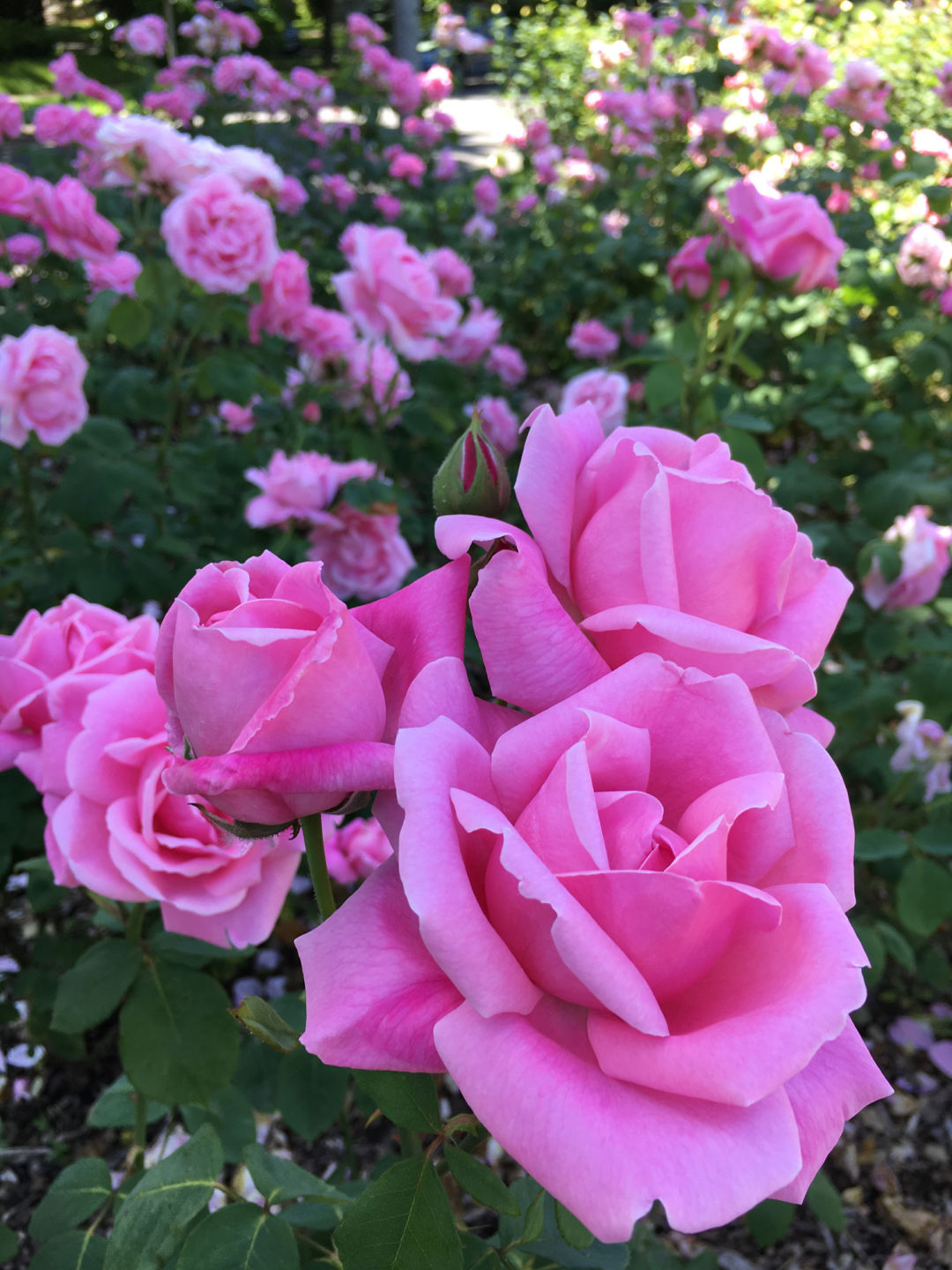
Caroline Testout roses growing in Ladd's Addition East Garden Block, June 2017
The year 1907 saw the beginning of the Portland Rose Festival, with hedges and home gardens providing millions of roses for floats, women's hats, and anything else that roses could adorn. A few years later, Portland was home to 200 miles of rose hedges lining curbs – an estimated one quarter of the city’s streets.
Rose fervor was dying down by the 1920s, but dedicated citizens issued passionate pleas to keep the streets lined with roses and to keep Portland the Rose City. However, it wasn’t until 2003 that Portland officially adopted the “City of Roses” as its nickname.
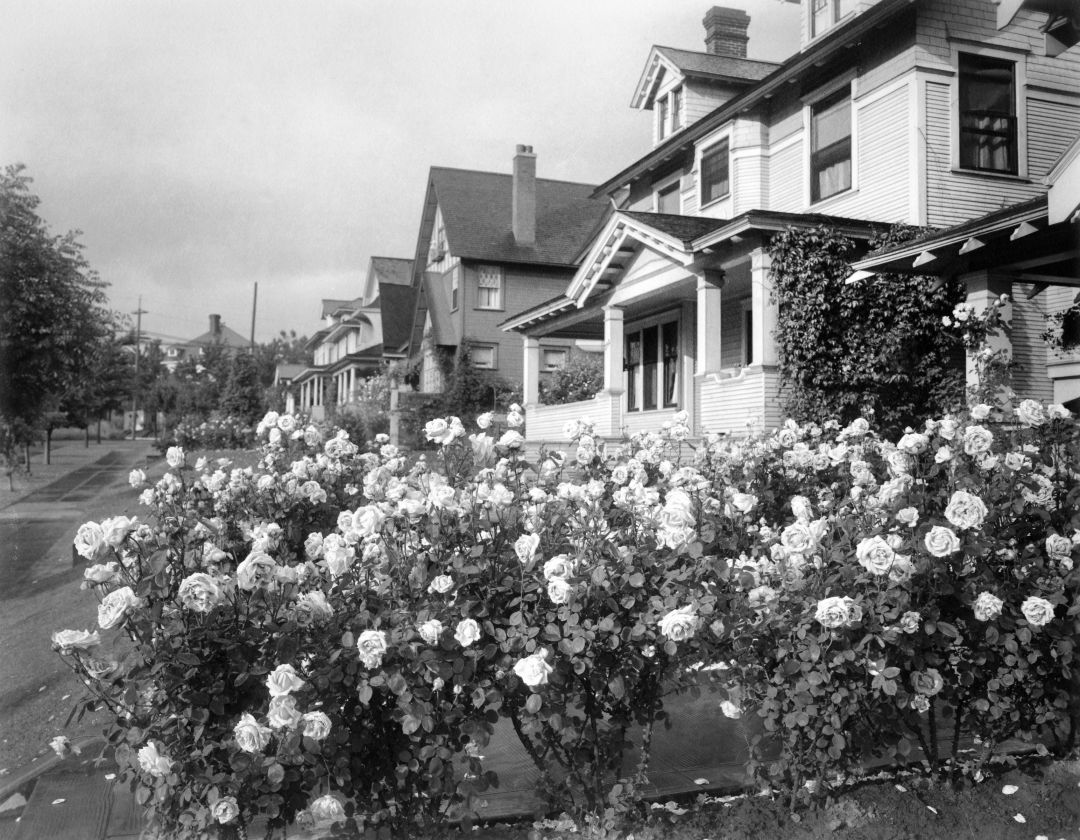
Rose historian and exhibit curator Laura King urges visitors to help keep Portland the Rose City by attending Rose Festival events and by planting roses in home gardens.
Madame Caroline Testout: The Rose that Made Portland Famous is on view at the Oregon Historical Society (1200 SW Park Avenue, Portland) through June 17. The museum is open seven days a week, Monday – Saturday from 10am – 5pm and Sunday from 12pm – 5pm. General admission is $10 and admission is always free for OHS members and Multnomah County residents.
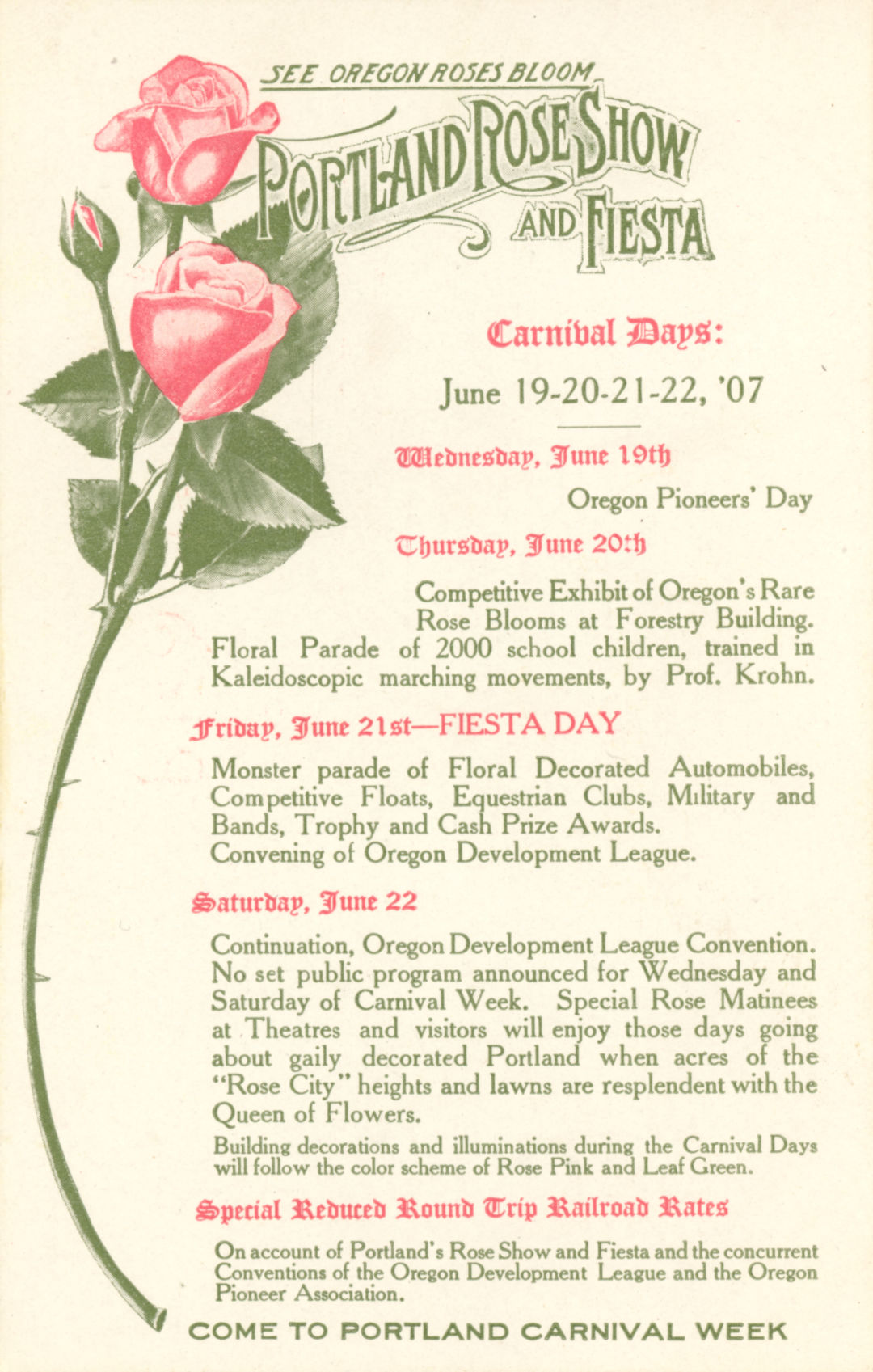
1907 Portland Rose Show & Fiesta. Caroline Testout on the handbill
